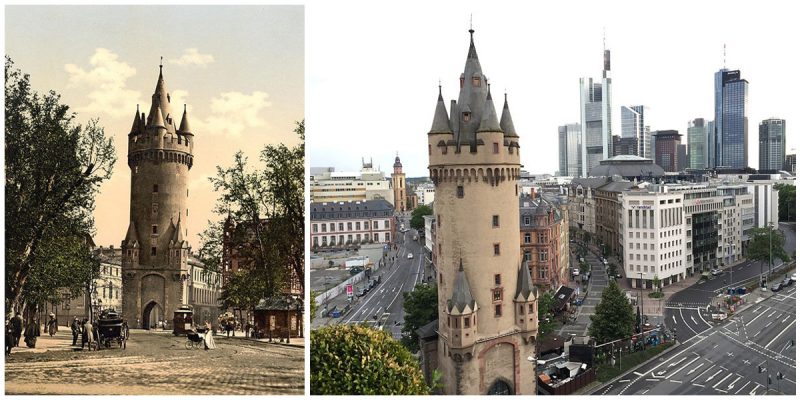One of the city’s oldest surviving structures and a local landmark, this 47m-high tower was once part of Frankfurt’s massive fortifications which consisted of nearly sixty towers and walls encircling the city.
Erected at the beginning of the fifteenth century, the Eschenheimer Turm tower is the oldest and most unaltered building in the largely reconstructed Frankfurter Neustadt (new town), now better known as the Frankfurt-Innenstadt (city center).
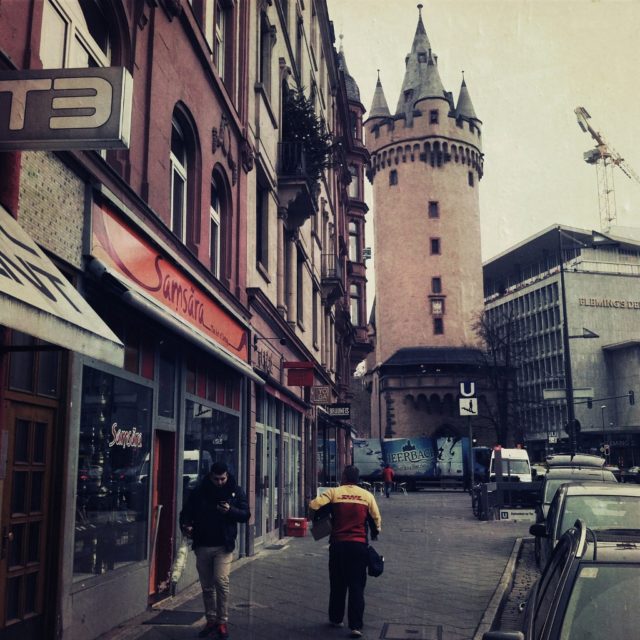
In the early 14th century the Frankfurter Altstadt (old town) gradually began to expand beyond its borders. The Holy Roman Emperor Louis IV began constructing the city walls to protect the “new town”, Frankfurter Neustadt, from the various dangers that threatened the city at that time. Fortification of Neustadt began during the middle of the 14th century and took over one hundred years to complete.
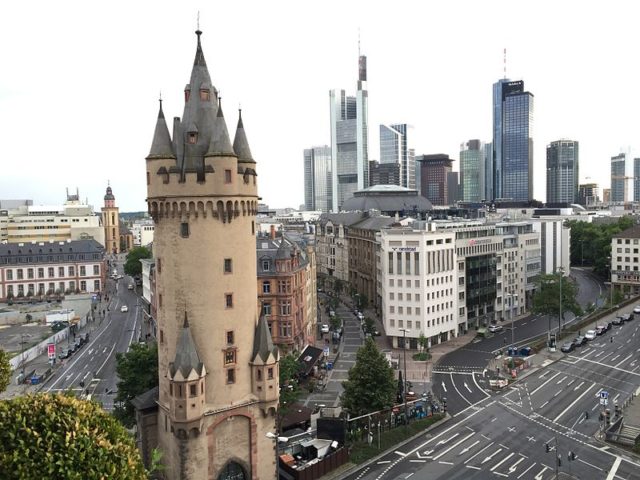
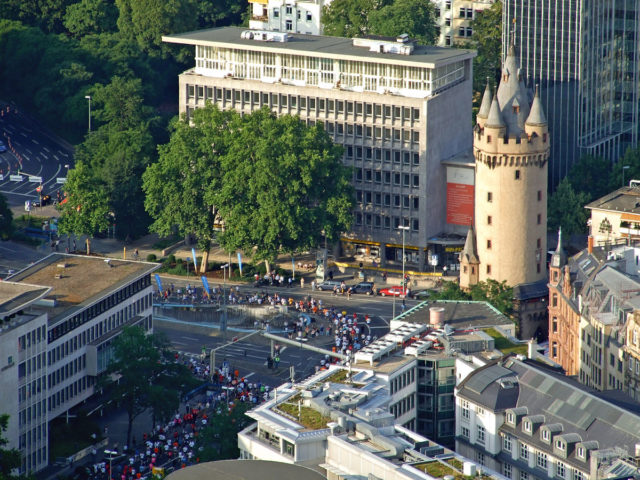
The cornerstone for the original gate tower was laid on 11 October 1349. In 1400 the carpenter Klaus Mengoz began construction of a replacement for the first gate tower. The architect of the Frankfurt Cathedral, Madern Gerthener, completed the new Eschenheimer Turm in 1426–1428. In 1806–1812 the old city walls were replaced with new fortifications at the command of the Prussian government, and Eschenheimer Turm, along with all the other historic gates and towers, was slated for demolition. At the objection of the ambassador of the French occupying forces, Count d’Hédouville, Eschenheimer Turm was allowed to remain as a monument, along with two other towers – the Rententurm on the Römerberg (Frankfurt’s main city square) and Kuhhirtenturm in Alt-Sachsenhausen.
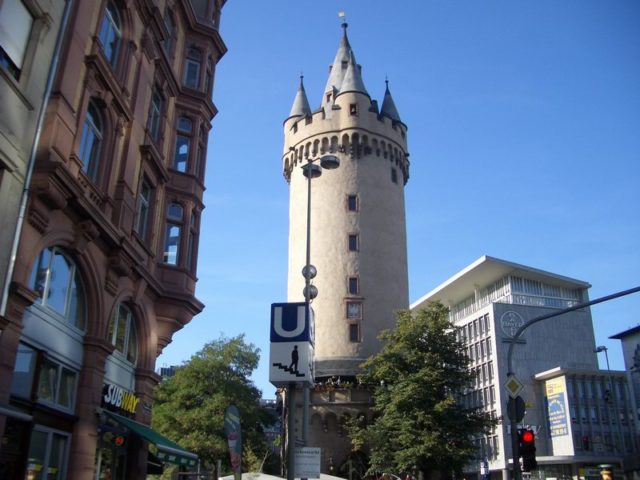
The tower, still mostly intact in its original configuration, is now set in a very urban environment — a large, busy plaza, called Eschenheimer Tor. Underneath Eschenheimer Tor is a subway station, which was erected in 1963-1968. The subway tunnel passes directly under the foundations of the tower. The midlevel of the metro station used to be the only way for pedestrians to cross the plaza or reach the tower. However, in 1992, Eschenheimer Tower, which for decades was situated on an inaccessible traffic island, was incorporated into the Schillerstraße pedestrian zone, making it once again accessible to foot traffic. The ground floor has since been repurposed as a bar and restaurant. Furthermore, the fireplace room of the tower guard is used by the hospitality operations. Quarterly meetings of the association Freunde Frankfurts (the Friends of Frankfurt) continue to be held in the fireplace room, as is reported in the history of the tower.
